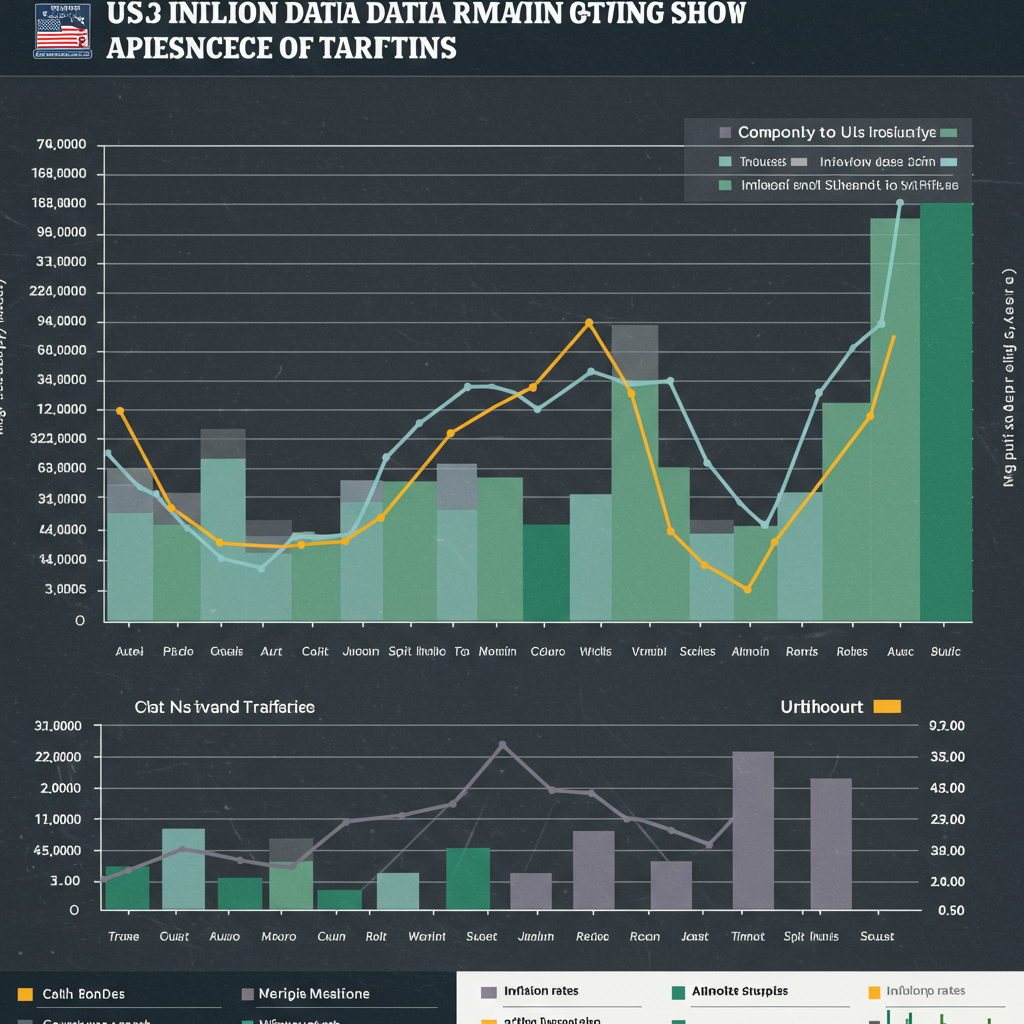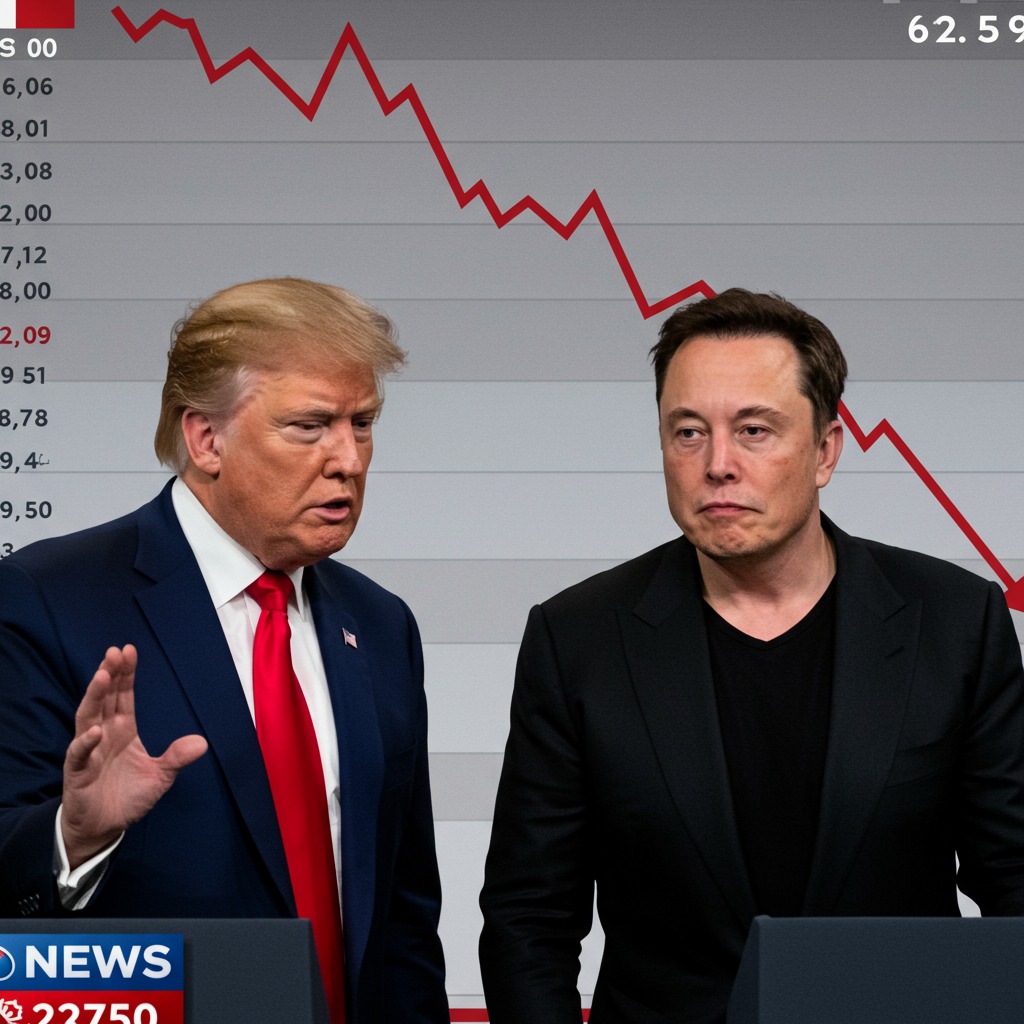Despite persistent warnings that imposing taxes on imported goods would inevitably lead to soaring consumer prices, recent economic data presents a surprising picture: U.S. inflation hasn’t significantly accelerated yet, even under the weight of increased tariffs.
Recent data paints a surprisingly calm picture for overall inflation. The Bureau of Labor Statistics reported a modest 0.1% rise in both consumer and producer prices in May 2025. While this contributes to an annual Consumer Price Index (CPI) rate of 2.4% (and a core rate holding steady at 2.8% for three months), it’s a far cry from the inflationary spikes many anticipated directly from tariff policies. It’s important to note, however, that despite recent slower growth, overall prices remain significantly elevated, up 23.7% since February 2020, meaning today $1,000 buys significantly less than it did pre-pandemic.
So, if tariffs are essentially a tax on imports, why haven’t they caused more widespread price hikes so far? Several factors appear to be keeping a lid on broad inflation, at least temporarily.
Key Reasons Tariffs Haven’t Driven Up Prices (Yet)
Economists point to a combination of strategies employed by businesses and prevailing market conditions:
- Pre-Tariff Stockpiling: Many businesses anticipated the tariffs and built up inventories of imported goods beforehand. This allowed them to continue selling at pre-tariff prices, delaying the impact of higher import costs. Senior economist Aichi Amemiya at Nomura notes that the limited impact seen in recent data likely reflects this initial stockpiling effect.
- Lagged Pass-Through: Businesses are hesitant to immediately pass the full cost of tariffs onto consumers. They may absorb a portion of the increased expense, especially to remain competitive or avoid shocking their customer base. Amemiya also cites this “lagged pass-through” as a key factor. Companies, including large retailers, have indicated that vendor partners absorbed a “meaningful portion” of early tariff costs. However, this absorption capacity is not infinite.
- Potential Consumer Weakness: Weak demand gives businesses less pricing power. If consumers are pulling back on spending, companies are less likely to risk losing sales by raising prices. Luke Tilley, chief economist at Wilmington Trust, suggests tariffs are more likely to cause economic weakness and potentially deflation rather than inflation due to this dynamic. He points to signs of consumers cutting back on non-essential spending like vacations and recreation. Historically, tariffs, like the infamous Smoot-Hawley tariffs of 1930, can contribute to economic downturns rather than solely inflation. Consumers are critical, driving nearly 70% of U.S. economic activity, so their willingness to absorb higher costs is a major test.
Where Are Tariff Impacts Starting to Appear?
While broad inflation indexes remain subdued relative to tariff fears, isolated price increases potentially linked to import duties have been observed in specific product categories.
Recent data highlights significant price increases in goods particularly sensitive to import costs or expanded tariff lists. These include:
Canned fruits and vegetables: Prices rose notably in May 2025 (2.6% for canned vegetables that month alone).
Roasted Coffee: Saw a 1.2% price increase in May 2025, contributing to an 11.8% rise over the past year.
Tobacco: Also experienced monthly increases (0.8% in May 2025).
Durable Goods: Items like major appliances saw a significant 4.3% jump in May 2025 alone. Economist Joseph Brusuelas at RSM notes this mirrors price surges seen during the 2018-2020 tariff rounds that impacted imported goods like washing machines. Computers and related items also saw increases (1.1%).
These specific examples suggest that while businesses may be absorbing costs or drawing down inventory for many items, goods directly impacted by tariffs or those for which alternative sourcing is difficult are beginning to show price pressures.
The Broader Economic Picture and Future Outlook
Despite the current lag, the consensus among economists remains that the impact of tariffs will likely materialize in the coming months. This aligns with historical patterns and the simple economic reality that taxes on imports translate to higher costs within the importing country.
Economists emphasize that despite the delayed impact on broad indexes, the cost of tariffs ultimately falls on American consumers and businesses. Analysis suggests tariffs imposed on goods from key trading partners could add over $1,000 annually to the average U.S. household’s expenses. This burden comes through higher prices on everything from fresh produce relying heavily on imports from Mexico (like avocados and berries) to cars and parts involved in integrated North American supply chains (potentially adding thousands to vehicle costs), energy from Canada (impacting gas prices in certain regions), and construction materials like lumber and drywall, which increase housing costs.
Companies are already reacting to these pressures. Some are actively shifting supply chains away from heavily taxed countries like China. For example, Apple is reportedly exporting a significantly higher percentage of iPhones made in India to the U.S. Home appliance companies are also anticipating being included in expanded tariffs.
Beyond direct prices, tariffs disrupt trade flows, impact specific industries (like chip makers or agricultural exporters facing retaliation), influence exchange rates, and have significant fiscal implications, bringing in substantial government revenue ($92 billion collected from duties in the U.S. from January to May alone, pushing the effective U.S. tariff rate to its highest since 1937).
A majority of economists surveyed anticipate that inflation will remain elevated through 2027, partly attributing this outlook to the anticipated effects of higher import taxes.
The Federal Reserve’s Watchful Stance
The Federal Reserve has been cautiously monitoring economic data, including the potential impact of tariffs, before making decisions on interest rates. While the Fed implemented rate cuts in 2024, officials have adopted a more hesitant approach in 2025, citing uncertainty, including over the effects of tariffs, as a main reason for holding off further cuts.
Fed officials are waiting through the summer to observe how tariffs truly influence prices and whether any inflationary pressures prove to be temporary market dislocations or more durable trends that could push consumer inflation expectations higher. The path of tariffs remains a significant variable in the complex equation determining future inflation and monetary policy decisions.
In conclusion, while the feared wave of tariff-driven inflation hasn’t broadly hit standard price indexes yet, it appears to be more of a delayed fuse than a dud. Temporary factors like stockpiling and cost absorption have provided a buffer, but isolated price increases are appearing, and the fundamental economic impact – higher costs borne by consumers and businesses – is expected to manifest more widely over time, keeping economists and the Federal Reserve on high alert.




